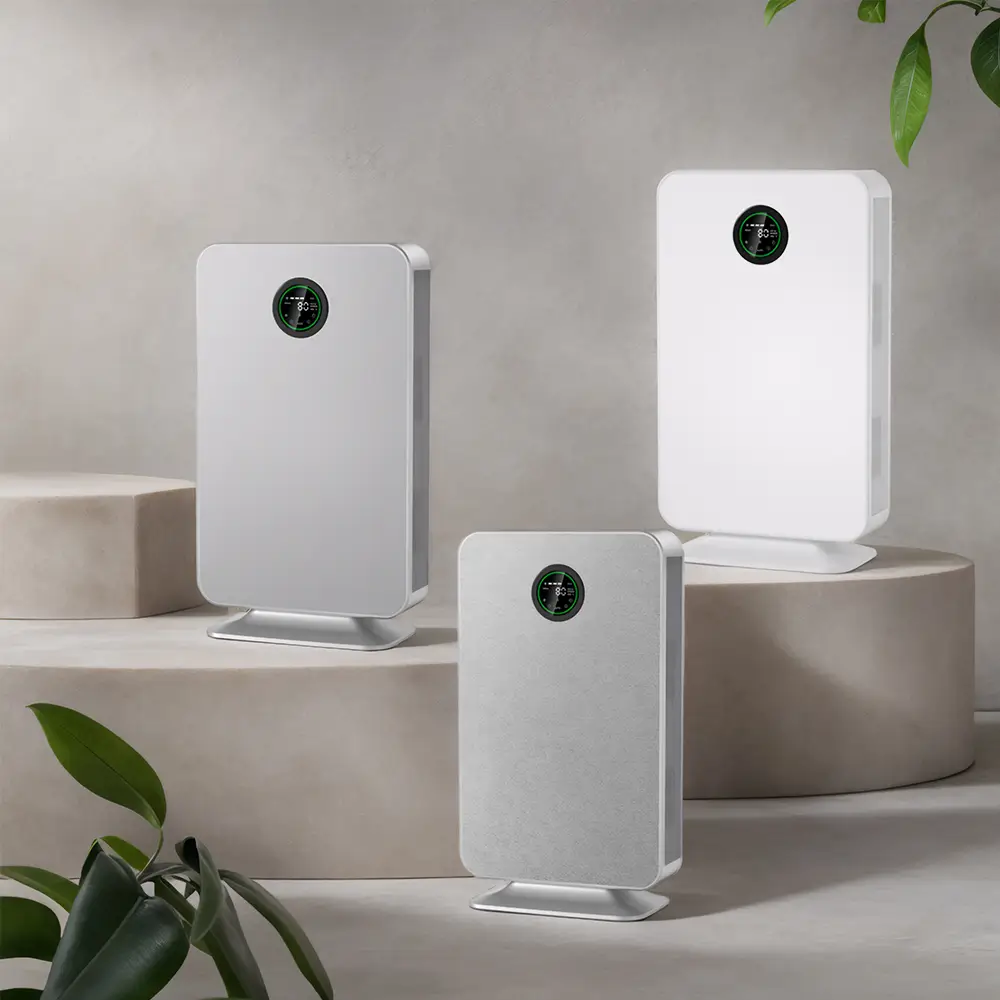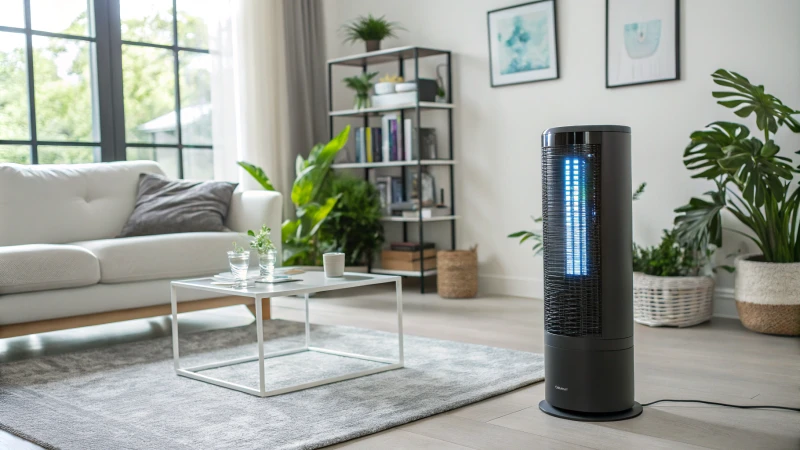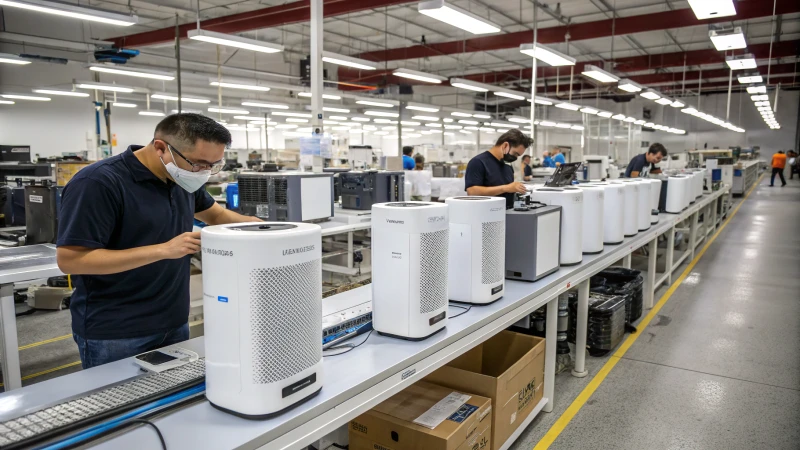
Have you ever thought about how to really power up your air purifier?
HEPA filters trap tiny particles. Activated carbon removes smells. UV-C light kills germs. Each plays an important part. Together, they work to clean indoor air. Safe and correct use is important for the best results. Safety is really important.
Looking back at my time in the air purification area, I noticed how each technology has its own important role in cleaning the air. An air purifier is not enough; knowing how the parts work together is key. When I first worked on these systems, I felt like I was solving a puzzle, where every piece was important.
If you plan to upgrade your air purifier or want to get the most out of the one you have, knowing how to mix these technologies safely is very important. In the next parts, I will share tips from my experience to help you choose wisely. This includes checking that HEPA filters fit correctly and thinking about the pros and cons of UV-C lights. My goal is to guide you in getting your air purification setup just right.
HEPA filters trap airborne particles effectively.True
HEPA filters are designed to capture 99.97% of particles as small as 0.3 microns.
UV-C light is ineffective against viruses in air purifiers.False
UV-C light can neutralize viruses by damaging their DNA, preventing replication.
Why Use HEPA and Activated Carbon Filters Together?
Rest easy because your air is safe! The combination of HEPA and activated carbon filters is not just a clever decision - it's a big change for the quality of air in your home.
HEPA and activated carbon filters together provide excellent air purification. HEPA filters trap dust and allergens. Activated carbon removes odors and volatile organic compounds (VOCs). This combination results in a cleaner indoor space. The air feels fresher.

Understanding HEPA and Activated Carbon Filters
Imagine entering a room that feels very fresh. HEPA (High-Efficiency Particulate Air) filters and activated carbon filters create this experience in your home. The first time I used both, the air felt really clear.
HEPA filters act like guards, blocking unwanted guests such as dust, pollen, pet dander1, and mold spores. These filters capture at least 99.97% of particles as tiny as 0.3 microns. In contrast, activated carbon filters excel in trapping gases, chemicals, and odors through adsorption—a process where pollutants adhere to the surface of the carbon.
Synergistic Benefits of Dual Filtration
Real magic occurs when these two work together. Picture living in a place where air is free from allergens and bad smells. Last night's dinner smell or cigarette smoke disappears with this combination that addresses both particulate matter and gaseous pollutants.
| Filter Type | Target Pollutants |
|---|---|
| HEPA Filter | Dust, Pollen, Pet Dander, Mold Spores |
| Activated Carbon | Odors, VOCs (Volatile Organic Compounds2), Chemical Vapors |
These filters together create air that feels as clear as an edited Instagram photo.
Enhancing Longevity and Efficiency
Using both filters improves air quality and helps air purifiers last longer. The HEPA filter is your main defense against particles; larger pollutants get caught first by the activated carbon filter, allowing the HEPA to focus on its task without clogging.
Regular care matters—cleaning or replacing filters as needed can prevent many problems. It's like getting oil changes for a car; it keeps things smooth. Regular maintenance ensures optimal performance as recommended by manufacturers like HisoAir3.
Real-World Applications
If you have pets or live with a smoker, clean air matters a lot. My friends with asthma visit my home and always say how easy it is to breathe.
In businesses like hotels or hospitals, clean air is really important. It not only makes customers happy but also maybe increases productivity by reducing irritants that cause health problems.
Explore more air purification solutions4 to find the right system so your indoor space always feels very fresh and welcoming.
HEPA filters capture 99.97% of particles.True
HEPA filters are designed to capture at least 99.97% of airborne particles as small as 0.3 microns.
Activated carbon filters remove allergens.False
Activated carbon filters are primarily used for trapping gases, chemicals, and odors, not particulate allergens.
How does UV-C light work in air purifiers, and is it safe?
Curious about how UV-C light in air purifiers might secretly protect your home from germs? Let’s explore how this technology operates and if it’s helpful or harmful.
UV-C light in air purifiers uses ultraviolet rays to destroy the DNA of germs in the air. This action kills viruses and bacteria. Safe use is very necessary. UV exposure and ozone creation are possible dangers.

Understanding UV-C Technology
I remember learning about UV-C technology. It felt like finding a secret superpower. UV-C light, which has a 200-280 nanometer wavelength, kills germs by deactivating the DNA of viruses and bacteria5. This makes it interesting for cleaning the air.
In air purifiers, UV-C lamps sit in special spots. Air flows through them, trapping germs. Some models even use shiny surfaces to catch every microorganism with UV rays.
Safety Concerns and Solutions
But, like any superpower, there’s a downside. Safety is always on my mind—maybe because I'm an engineer. UV-C light might burn skin or hurt eyes. It might also mix with oxygen and form ozone, which irritates our lungs.
To solve this, manufacturers hide the lights inside the purifier. This way, no light leaks and the air still gets clean6.
| UV-C Feature | Potential Risk | Mitigation Strategy |
|---|---|---|
| Skin & Eye Damage | Direct UV exposure | Enclosed UV chambers |
| Ozone Production | Oxygen interaction | Ozone-free technology |
Alternatives and Recommendations
When I consider different options, I think of HEPA and activated carbon filters. They work well and don’t have UV-C’s risks. For instance, HEPA 14 filters are special; they last long and resist dirt.
From my experience, using good filter material helps your HEPA filter last longer. It also saves money on replacements. To stand out, think about using advanced filtration7 methods instead of UV-C.
In the end, while UV-C light is powerful for air cleaning, understanding how it works and its risks really matters. Choosing an air purifier with this feature requires checking that it is safe to protect your health and indoor environment8.
UV-C light in air purifiers kills all bacteria.False
While effective, UV-C does not guarantee 100% bacteria elimination.
UV-C light can produce ozone in air purifiers.True
UV-C can interact with oxygen to form ozone, a respiratory irritant.
Why is HEPA 14 a recommended choice for better air quality?
I remember the day I found the magic of HEPA 14 filters. It felt like discovering a hidden gem for clean air. These filters really purify the air. Do you wonder why people speak so highly of them?
HEPA 14 filters are famous for trapping 99.995% of tiny particles, even those as small as 0.3 microns. Their outstanding filtration skills are perfect for places that need very clean air. Hospitals and homes with people who suffer from allergies benefit greatly. This is important. These filters really do a good job.

Understanding HEPA Filtration Efficiency
I remember when I first learned how HEPA filters work. It happened while I explored ways to improve home air quality. While HEPA 13 filters catch 99.95% of particles, HEPA 149 is even better, capturing 99.995%. This tiny difference seemed small at first, but in places needing very clean air, every little bit counts.
| HEPA Grade | Efficiency |
|---|---|
| HEPA 13 | 99.95% |
| HEPA 14 | 99.995% |
Applications in Medical Settings
My interest in air quality grew when I saw how hospitals purify air. There, HEPA 14 filters are common because they catch ultra-fine particles that might hold viruses or bacteria. These filters are vital in operating rooms and isolation wards10.
Benefits for Allergy Sufferers
Every spring, allergies bothered me until I learned about HEPA 14 filters. They catch allergens like pollen and dust mites. My life improved a lot during allergy seasons. A study on allergy relief11 shows high-grade filters greatly help with allergies.
Longevity and Cost Efficiency
HEPA 14 filters last a long time when combined with materials that hold lots of dust, needing fewer replacements. This saves money and supports my goal for sustainable living by reducing waste.
Considerations for Air Purifiers
When choosing an air purifier, more than filter efficiency matters. Consider factors like airflow resistance and noise levels affect your experience. Some brands offer features like Decibel Cancellation™12 technology to reduce noise for comfort.
Exploring Alternative Technologies
In my search for clean air, I found other methods like UV-C light sterilization; however, it may produce ozone, which is harmful. Experts, including me, suggest focusing on filtration methods like HEPA and activated carbon to stay safe.
Conclusion
Thinking about my journey to clean air, HEPA 14 filters are the best at purifying where air quality is crucial—from hospitals to homes wanting perfect indoor air.
HEPA 14 filters capture 99.995% of particles.True
HEPA 14 filters have an efficiency rate of 99.995%, ideal for critical settings.
HEPA 13 filters are more efficient than HEPA 14.False
HEPA 13 filters capture 99.95% of particles, less than HEPA 14's 99.995%.
How Can You Extend the Lifespan of Your Air Purifier Filters?
Curious about extending the life of your air purifier filters while still keeping the air in your home fresh and clean? I have useful tips that worked really well for me!
Extend the life of air purifier filters by cleaning the pre-filter often. Avoid using the device too much. Keep the area around it free from dust. Choose high-quality filters. Quality matters.

Understanding Filter Types
I got an air purifier and soon saw the importance of learning about different filters. Air purifiers generally have HEPA and Activated Carbon filters. True HEPA filters13 capture tiny pollutants very well, while activated carbon is perfect for removing smells and VOCs. Knowing the job of each filter really helps in caring for them properly.
| Filter Type | Benefits | Maintenance Tips |
|---|---|---|
| True HEPA | Captures small particles | Regularly check for clogs |
| Activated Carbon | Removes odors & VOCs | Replace periodically |
Regular Cleaning Practices
Regular cleaning is essential. I always clean the pre-filter. It’s simple but very important. The pre-filter traps larger dust and stops clogs in the main filter. A quick vacuuming or rinse, if washable, keeps it working well.
Avoiding Overuse
I thought using the air purifier all day was best, but it wears out the filter quickly. Now, I run it during peak pollution times or when I'm home. This smart usage14 saves the filter and reduces energy bills.
Selecting High-Quality Filters
Not all filters are the same. I choose high-quality filters with better dust capacity. This choice saves money and extends time between changes. Consider HEPA 14 filters15 for top performance.
Keeping the Area Clean
Dusting and vacuuming my home regularly has really helped lighten the purifier's workload. It reduces dust in the air that might clog filters early. On very polluted days, I close windows to maintain cleaner indoor air.
Monitoring Filter Life Indicator
My air purifier features a filter life indicator—very helpful! It informs me when to clean or change filters so I don't act too early or late.
Following these steps helps me extend my air purifier filter life, keeping my home air fresh and clean.
HEPA filters capture odors effectively.False
HEPA filters capture small particles, not odors; activated carbon does.
Regular cleaning can extend air filter lifespan.True
Cleaning pre-filters prevents clogs, extending main filter life.
Conclusion
Incorporating HEPA, activated carbon, and UV-C technologies enhances air purifiers' effectiveness. Each plays a vital role in improving indoor air quality by trapping particles, removing odors, and killing germs.
-
Understand how HEPA filters work and their effectiveness against common allergens like dust and pollen. ↩
-
Learn about VOCs, their sources, and why they are harmful to indoor air quality. ↩
-
Find practical tips for maintaining your air purifier to ensure it runs efficiently. ↩
-
Discover top-rated air purifiers that utilize both HEPA and activated carbon filters for superior air quality. ↩
-
Explore how UV-C light disrupts the DNA of microorganisms, making them unable to reproduce and cause harm. ↩
-
Learn about designs and technologies that allow safe incorporation of UV-C in air purifiers without health risks. ↩
-
Discover the advantages of using HEPA 14 filters for effective air purification without the risks of UV-C. ↩
-
Understand the essential safety certifications for air purifiers using UV-C to ensure secure indoor environments. ↩
-
Discover the exact specifications of HEPA 14 filters and understand their superior particle capture capability. ↩
-
Learn about the critical role of HEPA 14 filters in maintaining sterile environments in healthcare settings. ↩
-
Explore how high-efficiency HEPA filters can alleviate allergy symptoms by removing allergens from the air. ↩
-
Understand how advanced technologies like Decibel Cancellation™ improve air purifier performance and user comfort. ↩
-
Learn about True HEPA filters to understand their efficiency in capturing pollutants. ↩
-
Discover strategies to use your air purifier efficiently without overuse. ↩
-
Explore the benefits of using HEPA 14 filters for enhanced air purification. ↩







